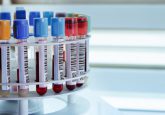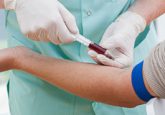Microsampling: is the future bright?

In the field of bioanalysis, the last three decades have seen major advances in analytical instrumentation, but there have been few changes in the way blood samples are collected and processed. However, standard blood sampling techniques cannot efficiently recover serum or plasma at blood volumes of less than 100 µL, and microsampling methods therefore require some type of novel approach or device be used. In spite of their apparent simplicity, technical or practical challenges have emerged with most microsampling techniques. The survey reported by the Bioanalysis Zone provides a snapshot of approaches to microsampling in different laboratories, and, therefore, may help to identify emerging trends for the future of microsampling.
Almost 60% of survey respondents indicated that they were either regular or occasional users of microsampling. The survey reflected continuing investigation of different approaches for microsampling, with 75% of respondents reporting use of wet plasma as a matrix, around 50% use of DBS, and 38% wet whole blood. Microsampling was reported as already in use for non-clinical applications by 87% of respondents, and 33% for clinical studies. Pediatric and Phase I–II studies were the top two types of clinical study. While the majority of respondents reported work on small molecule drugs, there was also significant interest in microsampling for large molecule drugs and biomarkers. The top two challenges for wet microsampling techniques were handling of small volumes and sensitivity of analytical techniques, whereas the primary concerns for dry microsampling was acceptance by regulators, followed by the potential for hematocrit changes to affect analytical accuracy. Most respondents indicated that microsampling would likely need additional validation, either in all cases or for particular methods. Overall, the survey reflected a continuing strong interest in microsampling, but that no single technical approach has yet emerged as a clear winner.
So, is the future really bright for microsampling? In the opinion of this author, the answer is yes, but efforts will likely be focused on studies where the most benefit is seen, and we may also see a divergence of approaches for different types of studies. For non-clinical uses, wet plasma microsampling may emerge as the most common approach, focused on small animal studies where sampling volumes are truly critical. This will support 3Rs goals and improve the quality of data generated from single studies. Slightly more complex sample collection protocols can be handled in the environment of such studies, and plasma PK and biomarker data can be more readily compared with other studies not requiring microsampling. For clinical studies, the very low volumes enabled by microsampling are rarely required, except in some specific situations such as pediatric studies in very young children. However, dried sampling formats are attractive for later stage clinical studies if access is limited to logistics for blood sample processing, storage and shipment. Given potential regulatory and technical challenges, we can expect dry microsampling techniques to mostly be applied where logistic issues are a strong driver, such as studies in developing countries, or sample collection remote from clinical facilities. In the longer term, we could imagine patient-performed home dry microsampling enabling a rethink of the design of PK and biomarker sampling schemes in large clinical studies, in contrast to the current situation where the timing of PK and PD blood samples is driven by patient clinic visits.
In conclusion, there is real potential for microsampling to improve efficiency, and the breadth of scientific data generated in various research and development studies. However, further refinement of microsampling procedures is needed, and there is scope for the introduction of new improved microsampling devices.
Our expert opinion collection provides you with in-depth articles written by authors from across the field of bioanalysis. Our expert opinions are perfect for those wanting a comprehensive, written review of a topic or looking for perspective pieces from our regular contributors.
See an article that catches your eye? Read any of our Expert Opinions for free.




